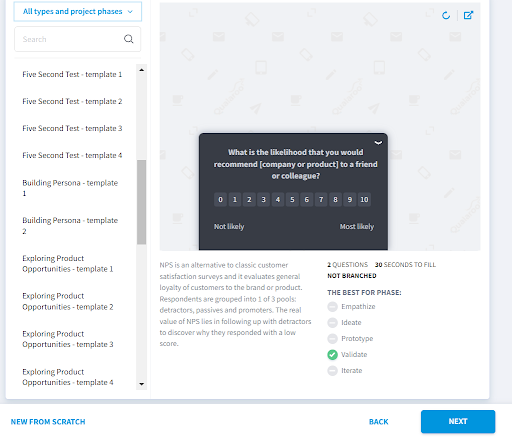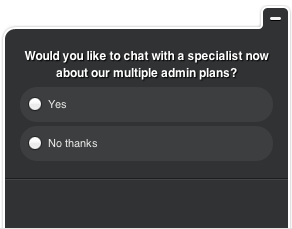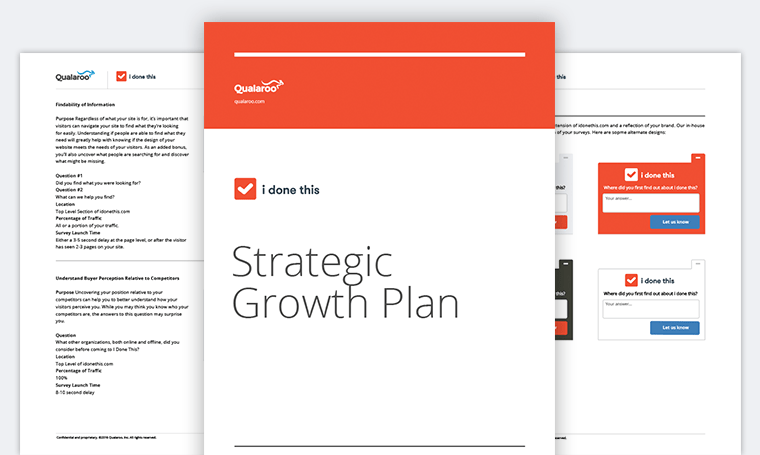You’ve done the hard part — built the product, got people to try it.
But then some of them just… disappear.
That’s when it hits you: bringing in new users is one thing, getting them to stay is a whole different game.
It’s not just about having a great product. It’s about knowing what’s working, what’s not, and why people leave — before they do. That’s where the right tools come in.
Take a small team that launched an iOS pet tracker app. People downloaded it, and even paid for it. But usage dropped fast. Why? They had no way to ask for feedback or understand what users wanted. Without a system to listen and respond, they couldn’t fix what was broken.
This blog helps you avoid that.
We’ve picked tools that help you do the real work of retention:
- Learn why users drop off
- Collect feedback at the right moments
- Reach out before they churn
- Build loyalty, not just transactions
These tools aren’t about vanity metrics — they’re about keeping your customers around for the long haul.
Let’s explore the ones that do the job best.
Quick Comparison: Top Customer Retention Tools at a Glance
Don’t want to spend too much time reading about all the tools? Here’s a quick sneak peek for you:
| Tool | Best For | Key Features | Integrations | User Rating | Pricing (Starts At) |
|---|---|---|---|---|---|
| Qualaroo | In-app feedback, exit surveys | NPS, sentiment analysis, skip logic, targeting, SDK | Salesforce, HubSpot, Slack, Zapier | 4.7/5 (Capterra) | $19.99/month. Forever Free Plan available with all premium features |
| ProProfs Survey Maker | Surveys, polls, quizzes | Templates, quizzes, mobile deploy, branching logic | Zendesk, Mailchimp, Freshdesk | 4.8/5 (Capterra) | $19.99/month. Forever Free Plan available with all premium features |
| ChurnZero | Customer success + health scoring | Churn alerts, health scoring, automation journeys | HubSpot, Salesforce, Segment | 4.7/5 (G2) | Custom Pricing |
| Gainsight | Product-led CX & retention ops | In-app guides, surveys, sentiment tracking, analytics | SAP, Microsoft Dynamics, Jira | 4.5/5 (G2) | Custom Pricing |
| Zendesk | Help desk + ticketing | SLA tracking, ticket automation, macros, analytics | Trello, Zoom, Shopify, Salesforce | 4.3/5 (G2) | $55/agent/month |
| Encharge | Lifecycle email automation | Behavioral triggers, email flows, visual builder | Stripe, Intercom, Segment | 4.7/5 (G2) | $99/month |
| Userpilot | Onboarding + in-app engagement | Checklists, surveys, tooltips, feature adoption tracking | Mixpanel, Heap, Segment | 4.6/5 (G2) | $299/month |
| Kissmetrics | Funnel + retention analytics | Behavioral cohorts, A/B testing, campaign tracking | Zapier, Mailchimp, Slack | 4.1/5 (G2) | Custom Pricing |
| Optimizely | A/B testing and experimentation | Multivariate testing, rollout control, WYSIWYG editor | Adobe Target, FullStory, Segment | 4.3/5 (G2) | Custom Pricing |
| ProProfs KB | Self-service help center | Searchable docs, templates, roles/permissions, analytics | Google Docs, Freshdesk, Zendesk | 4.6/5 (G2) | $49/month. Forever Free Plan available with all premium features |
The Best Customer Retention Tools for 2025
You’ve seen the overview — now let’s break it down.
Each tool below solves a specific retention problem: churn, onboarding, feedback, or engagement. We’ve highlighted what it’s best for, what real users say, and what it’ll cost you — so you can pick the right tool, faster.
Let’s start with the one built for fast, in-context feedback.
1. Qualaroo
When I was helping a fellow founder fix retention issues for their early-stage SaaS, we hit a wall: analytics showed us what users were doing, but not why they were leaving. I’d used Qualaroo before on one of my products, and suggested we try it. Within days of deploying in-app surveys, the feedback started pouring in — users were confused by the onboarding copy we thought was clear. One tweak later, trial-to-paid conversion lifted by 18%.
That’s the power of catching feedback at the moment it matters. Qualaroo does just that — without interrupting the experience.
Best For: In-app and website feedback, churn reduction, user sentiment analysis
Key Features:
- 100+ expert-made & ready-to-use survey templates
- Targeted NPS, CSAT, and exit-intent surveys
- AI-powered sentiment analysis for open-text responses
- Advanced targeting based on behavior, location, and user traits
- 10+ question types with branching & skip logic
- SDK support for mobile app feedback
- Fully customizable survey appearance to match your brand
- Integrations with tools like HubSpot, Zapier, Salesforce, and more
- GDPR compliant and enterprise-ready
What You’ll Like:
- Pinpoint why users leave before they actually do
- Trigger surveys based on behavior (like hesitation or inactivity)
- Real-time, high-quality insights — no guesswork
- Works across web, mobile, prototypes, and email
User Rating: 4.7/5 (Capterra)
User Review: “Qualaroo allows me to analyze and understand consumer insight without neccessarly hiring a marketing savvy. I collect consumer insight by targeting specific clients groups which guarantees clients satisfaction.” — Foster, Digital marketer
Pricing: Starts at $19.99/month. A forever-free plan is available with all premium features.
Don’t believe the reviews? Watch how Vattenfall uses Qualaroo to stay close to its customers:
2. ProProfs Survey Maker
I’ve personally used ProProfs Survey Maker on multiple projects, especially when we needed something that wasn’t just “a survey tool” but also flexible enough to run quizzes, polls, and post-training feedback across web and mobile. It’s convenient when you’re trying to figure out why customers drop off or what keeps them loyal, and want to ask in a way that actually gets answers.
This one checks many boxes for founders who want fast setup, flexible formats, and actionable insights without digging through dashboards.
Best For: Teams wanting a flexible, no-code platform to launch surveys, quizzes, and feedback forms across channels
Key Features:
- 100+ templates with scored, personality, and NPS quizzes
- Drag-and-drop survey editor with branching logic
- Mobile, website, and email deployment options
- Sidebar feedback buttons for non-intrusive data capture
- Survey translation into 40+ languages
- Custom branding, flexible design controls
- Supports GDPR compliance and advanced access control
What You’ll Like:
- Easy to set up across touchpoints — no coding needed
- Combines lead generation, retention, and feedback in one tool
- Works well for small teams and fast-moving experiments
- You can even gamify feedback with interactive quizzes
User Rating: 4.8/5 (Capterra)
User Review: “Using the built-in template to creating a survey is very easy and fast, as most of the item is already here and i only need to choose which question sets that compatible with my survey objective.” — Shahrul, Information Technology Assistant
Pricing: Starts at $19.99/month. Forever Free Plan available with access to all premium features
3. ChurnZero
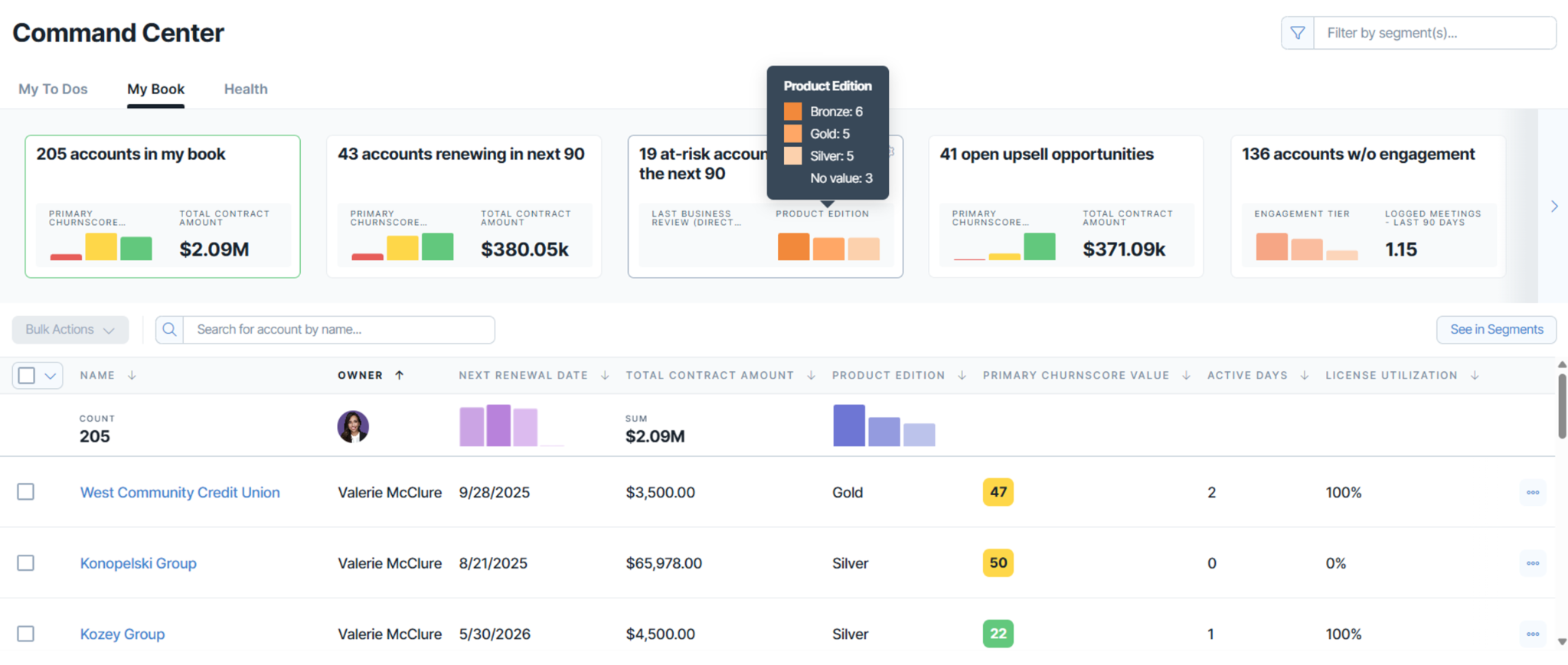
Image Source: Churnzero
I first heard about ChurnZero from a friend running customer success at a mid-stage SaaS company. Their team was drowning in spreadsheets, trying to track at-risk accounts, and nothing ever flagged issues soon enough. After switching to ChurnZero, they started getting early alerts based on usage drop-offs and automated outreach to save those accounts. It didn’t just reduce churn — it gave the CS team a real playbook.
ChurnZero isn’t your all-purpose feedback tool — it’s a focused platform for teams managing recurring revenue and customer health across high-touch accounts.
Best For: Customer success teams needing real-time visibility into account health and churn risk
Key Features:
- Health scoring based on custom product usage triggers
- Churn alerts with suggested actions
- Automated success journeys with in-app messaging
- Account segmentation and lifecycle dashboards
- Customer success playbooks and task management
- Integration with CRM and billing tools for end-to-end insight
What You’ll Like:
- Gives CS teams proactive control over retention
- Automates repetitive outreach while preserving personalization
- Useful dashboards for exec reporting and board meetings
- Tailored specifically for B2B SaaS with success teams
User Rating: 4.7/5 (G2)
User Review: “ChurnZero helps keep me organized and informed regarding the health of my accounts. Whenever you try to copy a contact’s email, ChurnZero always wants to keep the email in-house so a pop-up email window opens. I would like to just be able to copy the whole email.” — Molly P., Account Manager
Pricing: Custom pricing based on business size and integrations
4. Gainsight
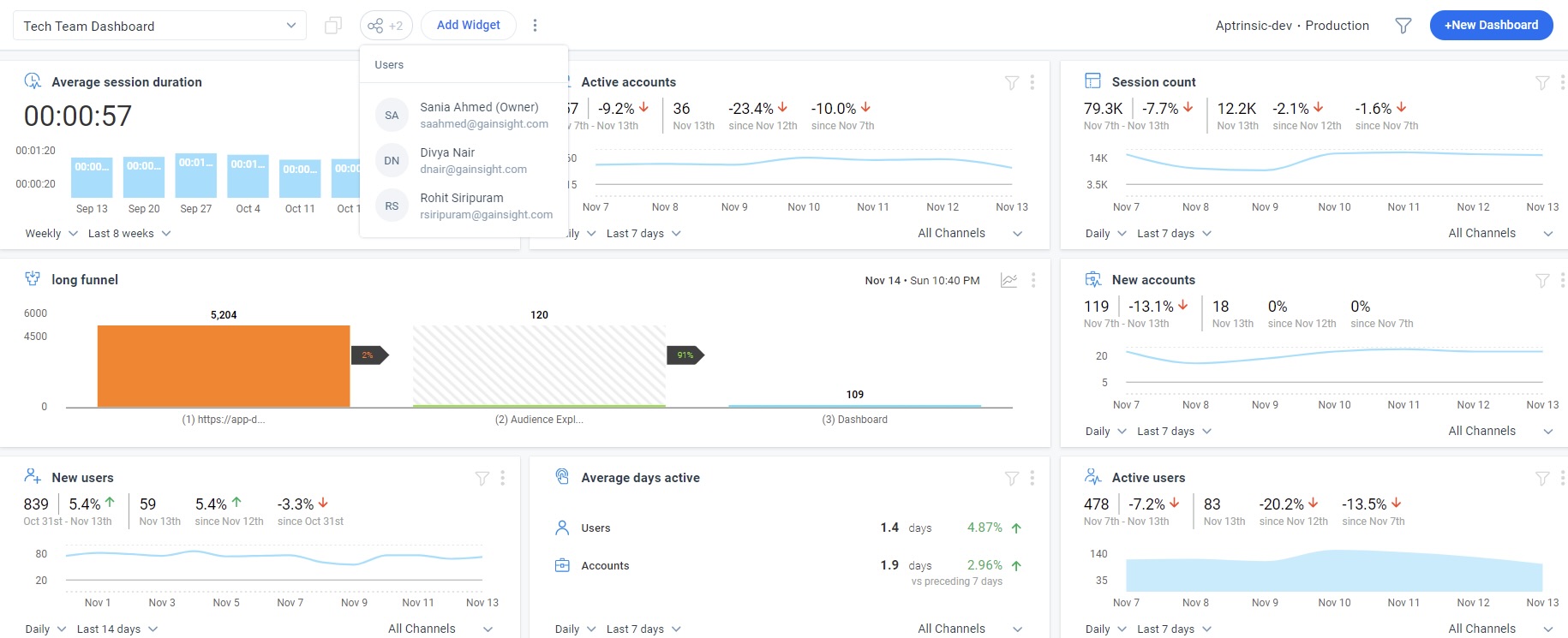
Image Source: Gainsight
A while back, in a Slack community for product-led growth teams, someone asked: “What’s the best tool to manage retention at scale across CS, product, and marketing?” About half the replies pointed to Gainsight. It’s one of those platforms you don’t start with — but once you hit scale, it helps stitch together everything from onboarding to expansion. One growth lead called it their “revenue insurance layer.”
That said, Gainsight’s strength is in orchestration — not speed or simplicity. If Qualaroo is how you listen in real time, Gainsight is how you build systems around what you’ve learned.
Best For: Mid to large businesses needing an enterprise-grade platform to manage retention across teams and workflows
Key Features:
- In-app guides, onboarding checklists, and walkthroughs
- Surveys with skip logic, advanced targeting, and localization
- Health scoring, user sentiment tracking, and behavior-based triggers
- Knowledge center bot and resource delivery inside product
- Workflow automation across teams (CS, product, sales)
- Deep analytics for response trends, usage, and engagement
- Custom dashboards and revenue insights
What You’ll Like:
- Rich, multi-touch onboarding flows
- Combines CS, product, and support into one platform
- Detailed reporting for execs and cross-functional teams
- Strong fit for PLG or enterprise SaaS businesses with large teams
User Rating: 4.5/5 (G2)
User Review: “As an individual contributor, it makes it easy to see all of the relevant information I need about the customer, account and account history in one single place. I wish it was easier to create dashboard myself, instead I have to rely on our Gainsight admin in order to do this.” — Greg W., Senior Customer Success Manager
Pricing: Custom pricing based on business size and feature needs
5. Zendesk
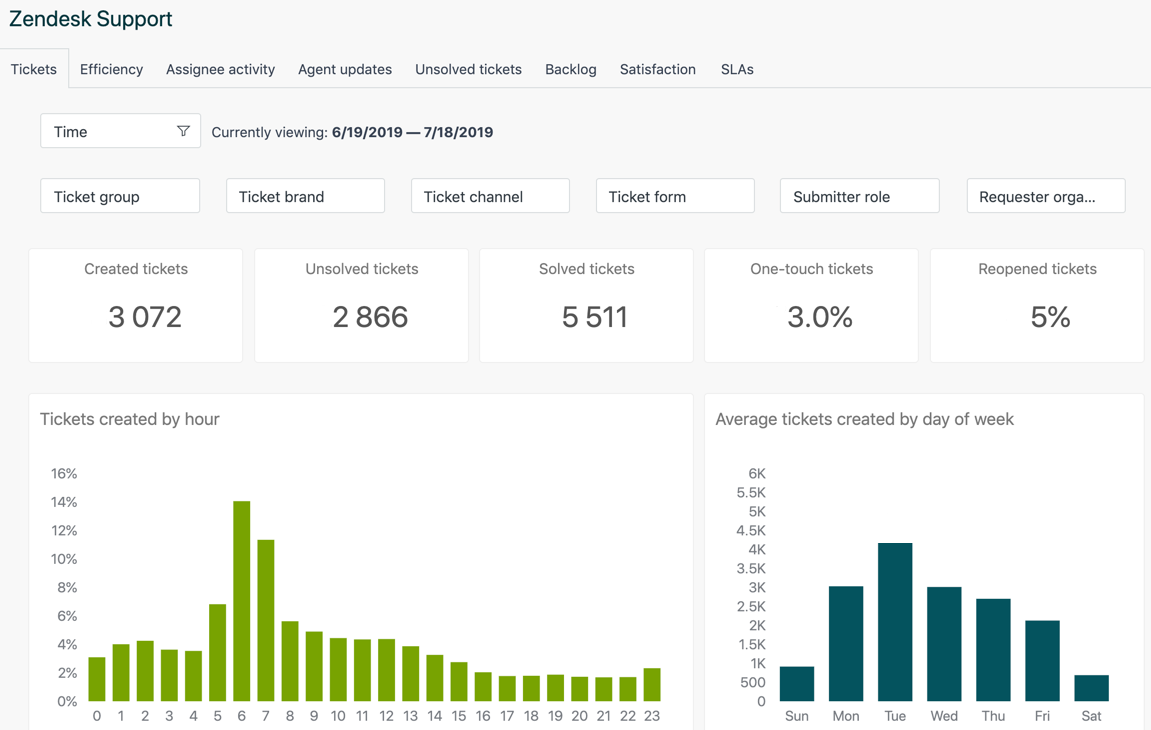
Image Source: Zendesk
Zendesk came up during a support revamp I helped with for a fast-growing DTC brand. Their biggest pain point? Customer tickets piling up and no system to track SLAs or response time. We set up Zendesk to centralize support across email, chat, and social — and immediately saw a drop in missed messages and a bump in CSAT.
Zendesk isn’t built to capture feedback like Qualaroo — but it absolutely helps retain customers by solving their problems fast.
Best For: Support teams needing help desk automation and ticketing across multiple channels
Key Features:
- Omnichannel ticketing (email, social, chat, and more)
- SLA workflows, priority rules, and agent activity tracking
- Canned responses, macros, and custom ticket fields
- Real-time collaboration between internal teams
- Knowledge base integration for self-service
- Robust analytics and satisfaction scoring
- Mobile app support and customer history tracking
What You’ll Like:
- Streamlines all support into one place
- SLA workflows help manage response quality at scale
- Easy for teams to collaborate without losing ticket history
- Strong app marketplace for extensions and add-ons
User Rating: 4.3/5
User Review: “I like that I can easily setup workflows and multiple triggers to keep tickets moving. I do not like that to use some of the more advanced parts of Zendesk you pretty much need to be a developer or spend some of your devs time helping setup some back end bit.” — Miguel C., Senior Customer Support Operations Specialist
Pricing: Starts at $55/agent/month
6. Encharge
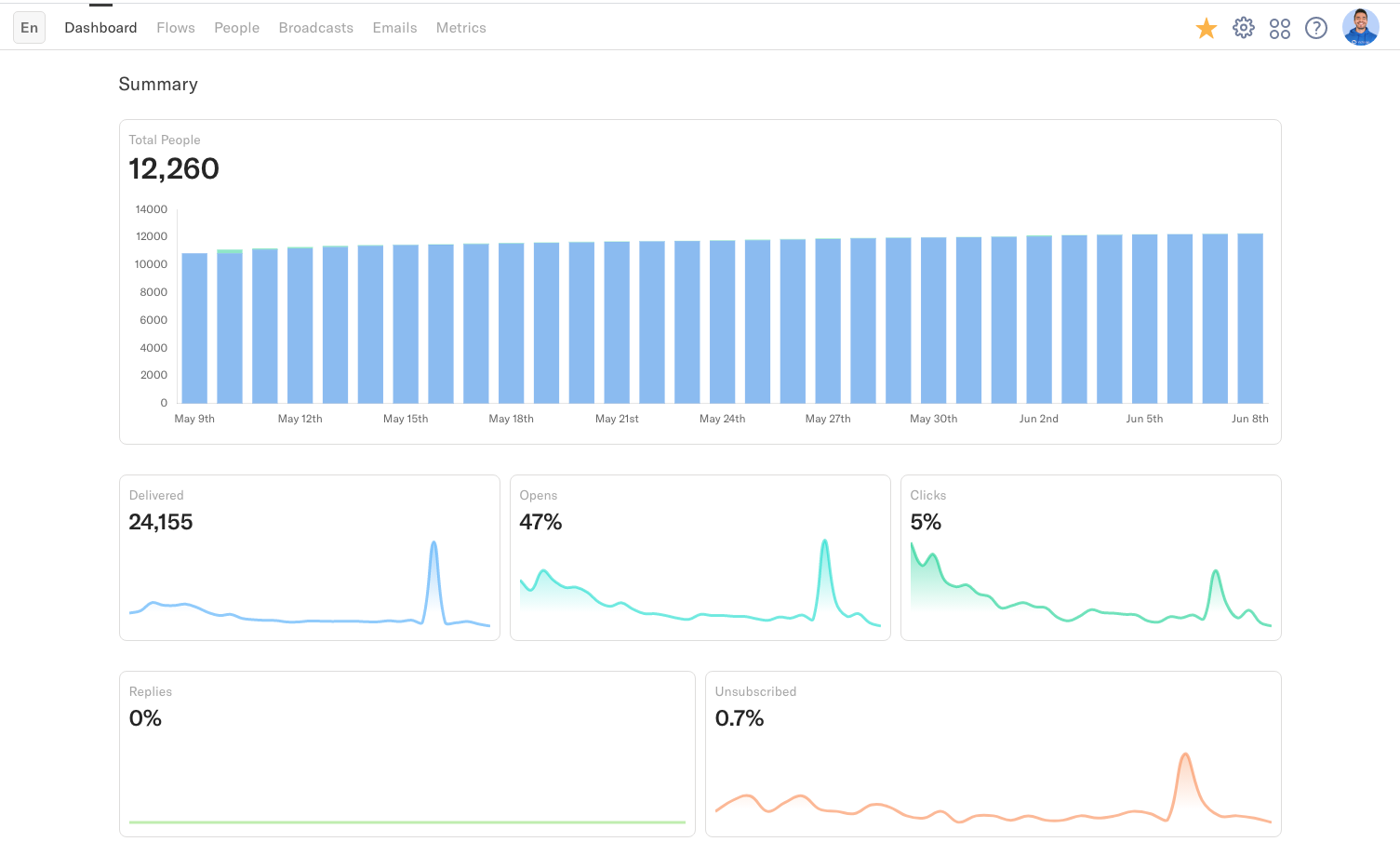
Image Source: Encharge.io
I discovered Encharge through a founder friend who runs a lean B2B SaaS and needed to automate user onboarding emails based on actual behavior, not just time-based drip sequences. They’d outgrown Mailchimp but didn’t want to spend weeks wiring up complex flows.
With Encharge, they could map journeys visually and trigger messaging when users hit (or miss) key milestones. Churn dropped, and trial conversions climbed. Encharge is for teams who want behavior-based automation, not just batch email.
Best For: Businesses needing behavior-driven email flows and lifecycle messaging without a heavy CRM stack
Key Features:
- Visual journey builder with drag-and-drop logic
- Event-based triggers from product usage or CRM data
- Email templates, A/B testing, and segmentation
- Automation based on signups, plan changes, inactivity, and more
- User profiles enriched with activity and lifecycle stage
- Role-based access and collaboration support
- GDPR compliant
What You’ll Like:
- Intuitive journey mapping even for non-technical teams
- Connects easily to Stripe, Segment, Intercom, and CRMs
- Let’s you build onboarding, nurture, and reactivation flows in one tool
- Scales well for SaaS, content, or subscription businesses
User Rating: 4.7/5 (G2)
User Review: “I purchased Encharge (https://encharge.io/) because I needed to send emails in bulk and was looking for an alternative to more well-known and expensive email marketing tools. To make it work at its best, it is necessary to perform some technical operations, such as domain verification, but the instructions are clear. You cannot delete users from a segment in bulk. It is not very simple to implement.” — Andrea V., Technical Engineer
Pricing: Starts at $99/month
7. Userpilot
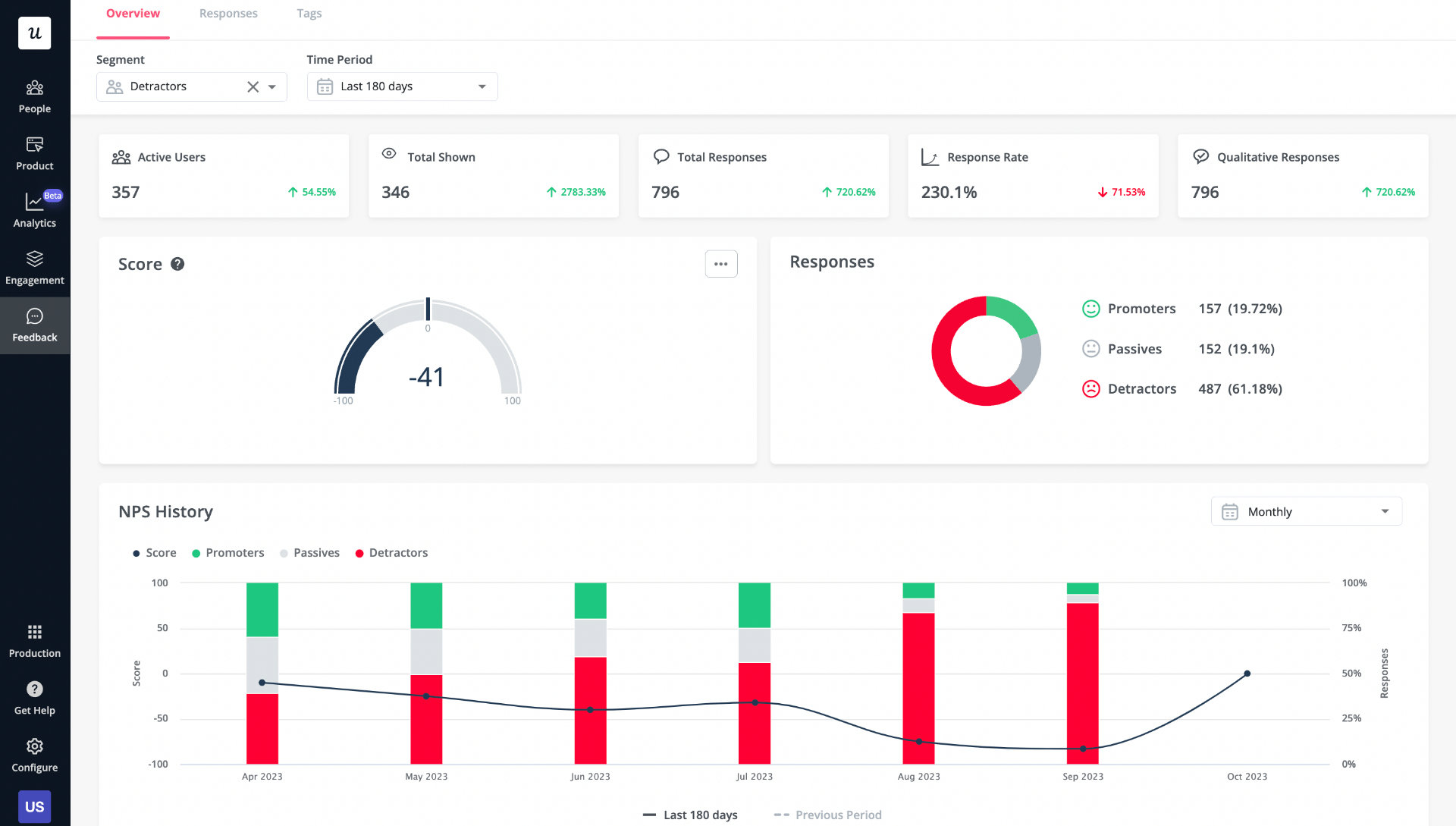
Image Source: Userpilot
Userpilot came up in a mastermind group I’m part of, where a few founders were comparing onboarding tools. One saw user drop-off right after signup — people weren’t finding the “aha” moment quickly enough. They rolled out in-app checklists and interactive walkthroughs with Userpilot, and within weeks, product adoption spiked.
If Qualaroo helps you understand why users churn, Userpilot enables you to show them what to do next, and guide them through it.
Best For: Product teams wanting to improve onboarding, feature adoption, and in-app engagement for web apps
Key Features:
- In-app tours, onboarding flows, and feature highlights
- Checklists, modals, tooltips, and slideouts
- Custom segmentation for targeted experiences
- Built-in NPS and survey widgets (basic)
- Real-time usage tracking and experience analytics
- Role-based access and localization support
- No-code builder for fast deployment
What You’ll Like:
- Fast way to build onboarding without engineering
- Helpful for guiding users to key features post-signup
- Segmented experiences for new vs. returning users
- Great fit for SaaS tools following a product-led growth model
User Rating: 4.6/5 (G2)
User Review: “Not the easiest product to learn to use unfortunately and there are some usability issues and off-color design/ux choices in the use of the product. Creating segments or using segments isn’t always straight forward. Viewing data from surveys can be tricky as well where button clicks aren’t considered as an answer.” — Shahriar E., Product Designer
Pricing: Starts at $299/month
8. Kissmetrics
Image Source: Kissmetrics
I first used Kissmetrics when we were trying to figure out why users weren’t coming back after signing up. Traditional analytics told us what pages were popular, but not how individual users were behaving across sessions. Kissmetrics filled that gap by showing us which segments were sticking, which were bouncing, and how usage correlated with conversions.
It’s not for surveys or feedback, but it’s a strong analytics layer if you want behavioral clarity over time.
Best For: Teams wanting to track user behavior, funnel performance, and retention trends over time
Key Features:
- Event-based tracking across web and mobile
- Behavioral cohorts and lifetime value analysis
- Campaign attribution and ROI reporting
- A/B test performance tracking
- Multi-device session tracking
- Customer segmentation and filtering
- Custom dashboards with retention KPIs
What You’ll Like:
- Helps you spot drop-offs across the user journey
- Connects marketing performance with product usage
- Supports funnel optimization and churn analysis
- Ideal for SaaS or ecommerce teams focused on LTV and CAC
User Rating: 4.1/5 (G2)
User Review: “I like being able to monitor my company’s marketing by conducting a geographic study of consumer behavior concerning services. One thing I don’t like is that they charge extra for simple services, lack qualified support staff to handle all customer inquiries, and sometimes take a long time to respond to requests for information.” — Keyla A., Project Management
Pricing: Custom pricing based on volume and tracking needs
9. Optimizely

Image Source: Optimizely
A product manager I worked with once said, “We don’t have a retention problem — we have a guessing problem.” That’s when they brought in Optimizely. They needed to test different onboarding flows, pricing page layouts, and feature placements to see what moved the needle.
Within weeks, they had data-backed answers to what had previously been gut decisions. Optimizely is for teams who believe retention starts with experiments, not assumptions.
Best For: Product and growth teams needing controlled A/B testing and experimentation at scale
Key Features:
- Multivariate and split testing
- Visual editor for non-technical changes (WYSIWYG)
- Performance Edge for faster experiment delivery
- Rollouts and feature flagging
- Server-side and client-side experimentation
- Audience targeting and behavioral filters
- Results dashboards with statistical confidence
What You’ll Like:
- Lets you test onboarding flows, pricing, CTAs, and UX
- Helps validate changes before rolling them out broadly
- Good for data-driven teams optimizing over time
- Strong developer tools plus a no-code editor
User Rating: 4.3/5 (G2)
User Review: “While Web Experimentation offers remarkable speed and flexibility, it also opens the door to some real risks if not used with discipline. The very thing that makes it powerful – its ability to bypass the usual delivery pipeline – also makes it dangerously easy to misuse.” — Nicholas H., Practice Lead
Pricing: Custom pricing based on usage and experimentation needs
10. ProProfs Knowledge Base
I’ve used ProProfs Knowledge Base on multiple projects, especially when we needed a simple, searchable help center that didn’t require technical setup. For one product launch, we used it to host onboarding guides, troubleshooting content, and FAQs. Support tickets dropped, and users got what they needed faster, without emailing us.
This is a reliable, no-frills solution for reducing friction and helping users solve problems independently.
Best For: Teams or businesses needing a searchable, self-service help center to reduce support load and improve onboarding
Key Features:
- Customizable help sites with role-based permissions
- Google-like search, article templates, and revision tracking
- Drag-and-drop editor with image, video, and file embedding
- Support for multiple knowledge bases under one dashboard
- SEO-friendly content structure and indexing
- Vault feature for backups and content recovery
- Insightful reports on content usage and user feedback
What You’ll Like:
- Fast to launch, easy to update
- Great for support teams, product onboarding, and training
- Reduces repetitive tickets and improves time-to-resolution
- Helps users find answers without waiting for help
User Rating: 4.6/5 (Capterra)
User Review: “ProProfs Knowledge Base offered unique tools for attending customer enquiries to our organization. In fact, our customers keep praising us about the convenience we offer through help widgets.” — Sylvia S., Relationship Expert
Pricing: Starts at $49/month. Forever Free Plan available with all premium features
How to Choose the Right Customer Retention Tool
Not every business needs the same tool, because not every churn problem looks the same.
Some teams need to reduce friction during onboarding. Others need to hear directly from users. Others still are drowning in tickets or struggling to follow up. This section helps you pinpoint what kind of issue you’re solving — and exactly which tools to use for it.
1. “I don’t know why users are churning.”
This is the most important problem to solve—and the easiest to ignore. If you don’t ask users why they leave, you’re building blind.
You need:
- In-the-moment feedback (exit intent, inactivity, hesitation)
- Behavioral targeting and audience filters
- NPS, CSAT, and open-ended surveys
- Sentiment analysis and visual reporting
- Mobile SDK + website support
- GDPR compliance and full branding control
The Right Tool:
- Qualaroo — The only tool in this list built specifically to surface why users drop off, not just what they did. Place surveys at drop-off points, analyze responses instantly with AI sentiment analysis, and fix retention leaks based on real insight.
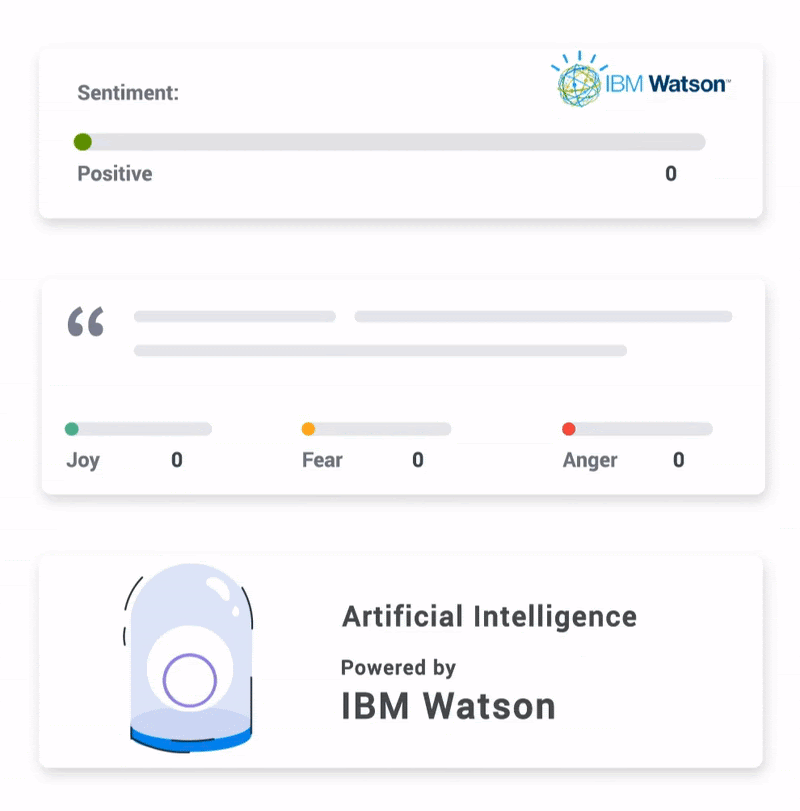
If you’re starting anywhere, start here.
2. “Users aren’t getting value fast enough.”
Your onboarding isn’t broken — but it’s probably unclear or too passive.
You need:
- Product tours, checklists, and in-app tooltips
- Targeted experiences for new vs. returning users
- Fast setup without dev involvement
- Ability to measure and improve flows
The Right Tools:
- Userpilot — A strong pick for no-code onboarding UX.
- Qualaroo — Use it alongside onboarding to ask: “Was this helpful?” or “Did you find what you were looking for?”
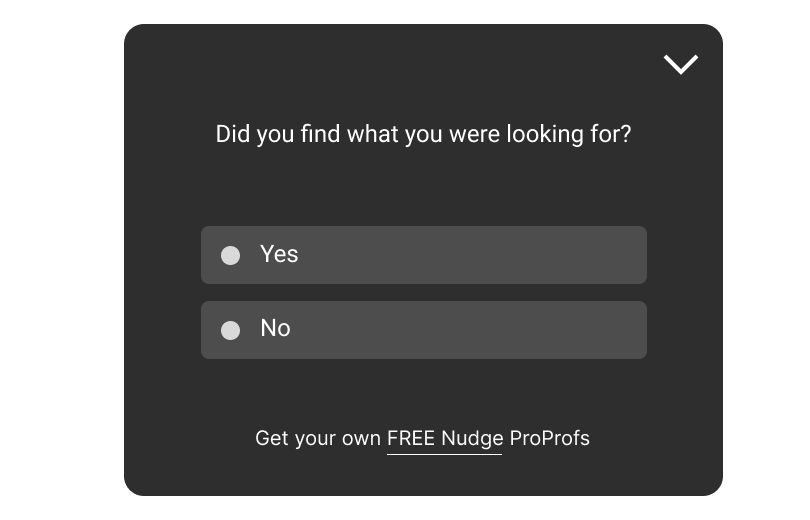
In short: Userpilot guides, but Qualaroo understands. You need both to improve over time.
3. “We need to automate personalized outreach.”
You can’t scale retention with manual follow-ups, especially when users go quiet.
You need:
- Email workflows based on behavior (not time-based drips)
- Journey builder with goal tracking
- Segmentation and lifecycle tagging
- CRM, Stripe, and Segment integrations
The Right Tools:
- Encharge — Built for fast-moving SaaS teams needing flexible email automation.
- But email alone won’t tell you why someone didn’t convert. That’s why Qualaroo remains essential — to close the insight loop.
4. “Our help desk is overloaded.”
Every “Where do I find X?” ticket costs time — and signals a product or content gap.
You need:
- Public-facing help center with smart search
- Templates, content editor, and analytics
- Role-based permissions and multilingual support
- Integration with live chat or ticketing tools
The Right Tool:
- ProProfs Knowledge Base — Lightweight, flexible, and fast to deploy.
- And guess what? You can embed Qualaroo surveys directly in your help docs. This way, you don’t just inform users — you learn from them, too.
5. “I want to prevent churn before it happens.”
By the time someone cancels, it’s too late. You need signals early, and systems in place to act.
You need:
- Real-time health scores and churn risk indicators
- Alerts based on behavior or inactivity
- CSM workflows and account dashboards
- Tight CRM + usage integration
The Right Tool:
- ChurnZero — Built for CS teams managing account health across portfolios.
- But these systems still miss subtle sentiment. That’s where Qualaroo shines: It places targeted surveys inside the product and collects high-signal feedback that tools like ChurnZero can’t detect on their own.
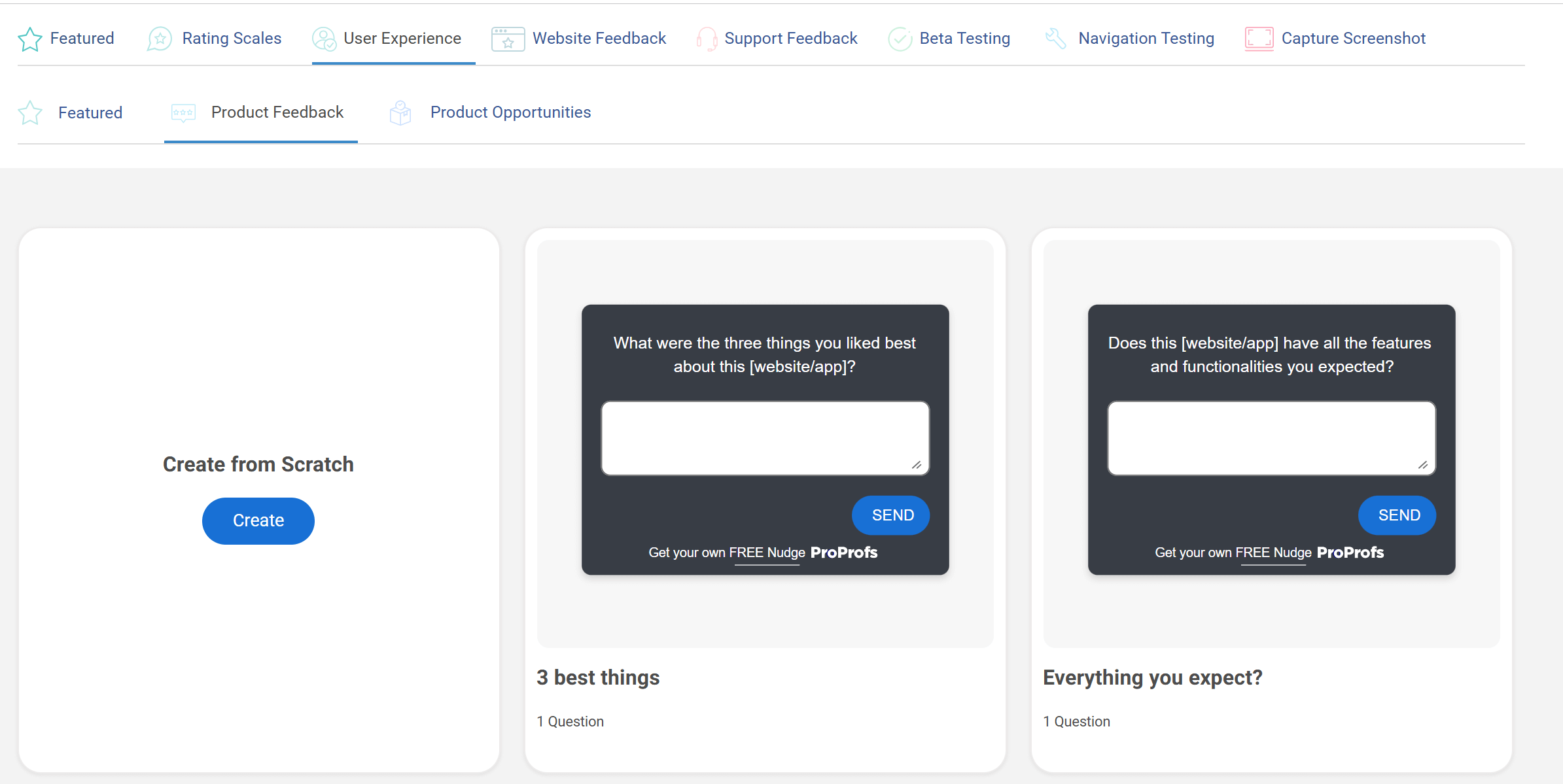
6. “We need to know what changes actually improve retention.”
When you’re experimenting with messaging, UX, or pricing — you need proof, not hunches.
You need:
- Controlled A/B and multivariate testing
- Feature flagging and rollout control
- Reporting with statistical confidence
The Right Tool:
- Optimizely — The standard in experimentation and rollout safety.
- But metrics alone don’t explain why users prefer one variant. Run Qualaroo surveys on winning and losing versions to capture context — the why behind the win.
Start Here: The Most Reliable Retention Stack
| Situation | Start With |
|---|---|
| You need fast, contextual user feedback | Qualaroo — no substitutes |
| You want fewer support tickets | ProProfs Knowledge Base + Qualaroo |
| Onboarding is unclear or underperforming | Userpilot + Qualaroo |
| Emails aren’t converting or timely | Encharge + Qualaroo |
| Managing high-touch accounts | ChurnZero + Qualaroo (for insight) |
| Testing product changes | Optimizely + Qualaroo (for feedback) |
| Broad survey needs (quizzes, polls) | ProProfs Survey Maker |
Ready to Build a Retention System That Actually Works?
You can’t out-market a leaky product. You can’t out-spend a churn problem. But you can out-learn it — if you build the right feedback loops, automation, and support systems into your stack from day one.
The tools we’ve covered don’t just help you reduce churn. They help you:
- Understand what users want (and why they leave)
- Personalize how and when you reach out
- Guide users before they get lost
- Support them before they need to ask
- Test and improve before it’s too late
If you’re wondering where to begin, the answer is simple: start by listening.
That’s where Qualaroo comes in. It gives you the insight most teams miss — the why behind the what. And once you have that, everything else — onboarding, automation, support — becomes easier to get right.
Build your stack with intention. Start with feedback. And never stop iterating.
Frequently Asked Questions
What are the 3 R’s of customer retention?
The 3 R’s commonly referenced in retention strategy are:
Retention – Keeping your existing customers engaged over time
Referral – Turning happy customers into brand advocates
Revenue – Increasing customer lifetime value through upsells, renewals, or repeat purchases
Retention software helps with all three by improving experience, encouraging feedback, and identifying upsell opportunities.
What is CRM and retention?
Retention is a business’s capacity to keep its customers, users, or employees engaged and loyal over time. A CRM (Customer Relationship Management) tool stores customer data and tracks interactions — it’s useful for managing relationships. But CRM alone isn’t enough for retention, other customer retention tools are also required.
What is a customer retention analysis tool?
A customer retention analysis tool helps you understand: Why customers churn, which segments are at risk, what actions lead to longer retention, and how satisfaction scores (NPS, CSAT) correlate with behavior.
Qualaroo is a standout here — it captures real-time user sentiment and behavior-linked feedback, which you can analyze on its own or integrate into tools like Tableau for deeper insight.
Can I customize surveys, branding, and messages?
Yes — especially with Qualaroo, ProProfs Survey Maker, and Userpilot. You’ll be able to fully control the look, feel, and targeting of your messages or surveys.
FREE. All Features. FOREVER!
Try our Forever FREE account with all premium features!
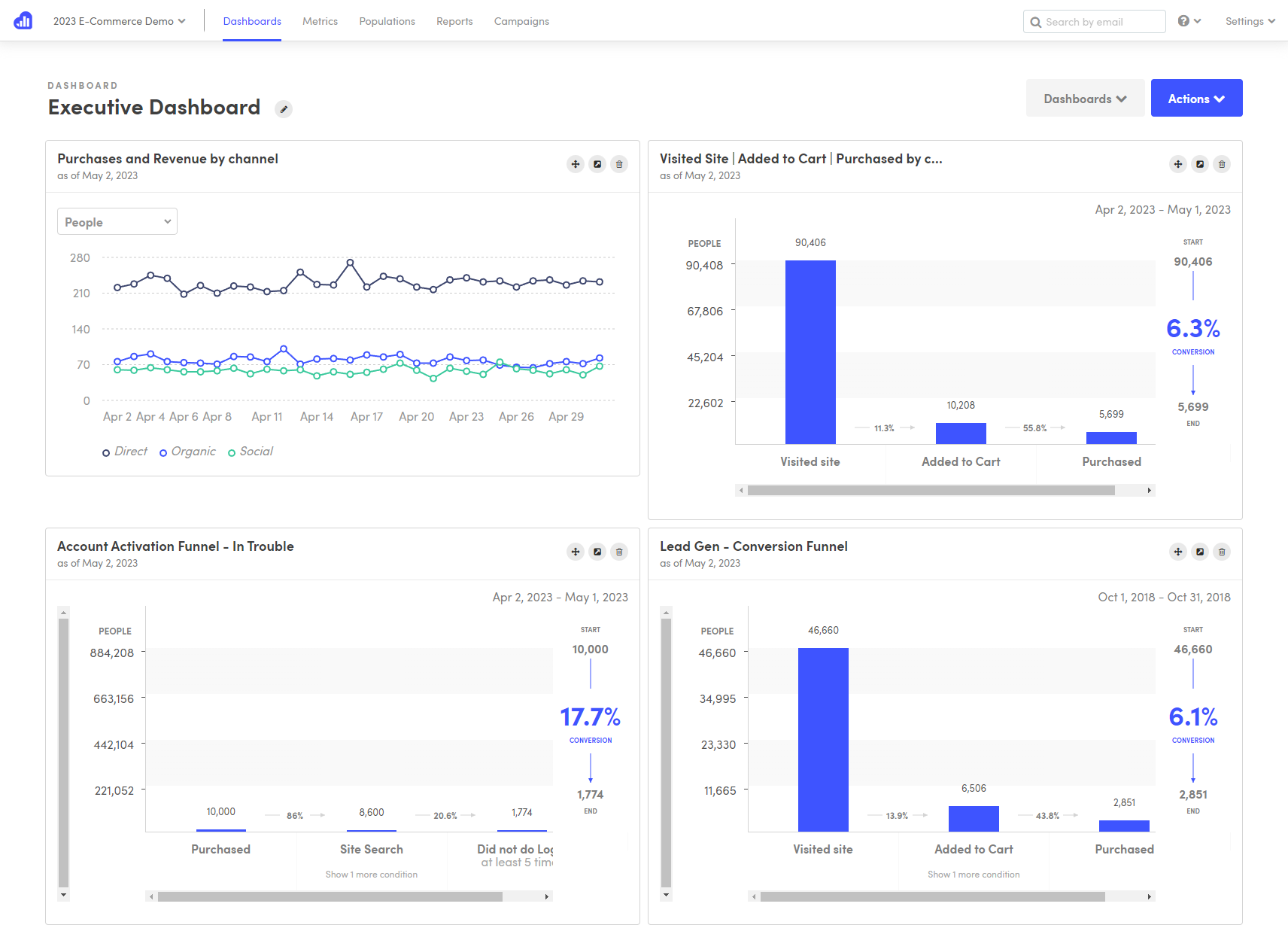
 We'd love your feedback!
We'd love your feedback! Thanks for your feedback!
Thanks for your feedback!



